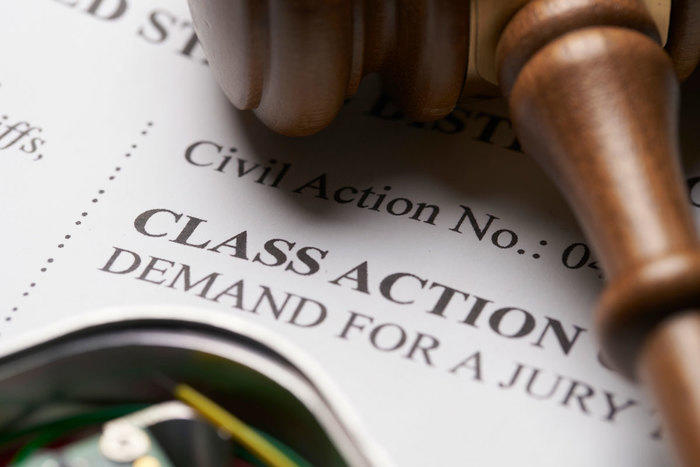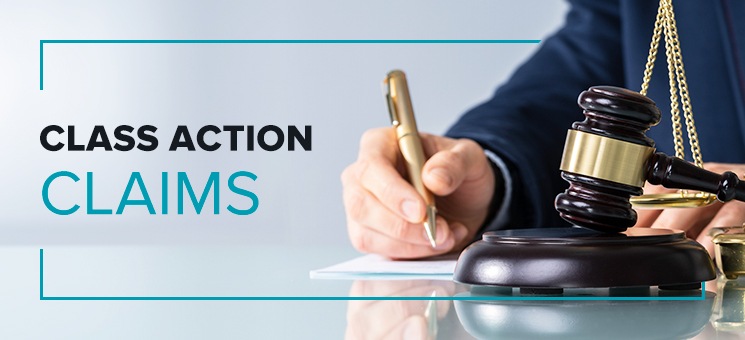Your Legal rights, Your Voice: The Basics of Going After a Class Action Lawsuit
Wiki Article
Understanding Course Action Legal Action: A Guide for Attorney
Class action claims have actually come to be an integral part of the legal landscape, allowing for the loan consolidation of multiple cases into a single activity. By delving into the complexities of class activity legal actions, this overview gears up lawyers with the expertise and tools required to effectively browse this complex location of law.The Fundamentals of Class Action Suits
Class activity lawsuits are a lawful device utilized to settle comparable insurance claims from a group of individuals right into a solitary legal action, offering a efficient and economical approach to seeking justice and resolution. This sort of claim enables a depictive complainant, acting on part of the entire class, to bring a case versus an offender that has supposedly triggered harm or went against the legal rights of several individuals.The basic needs for bringing a class activity claim consist of numerosity, commonness, typicality, and competence of depiction. Numerosity refers to the reality that the course have to be so big that joinder of all members would certainly be unwise. Commonness suggests that there must prevail concerns of regulation or reality that are shared by all members of the class. Typicality requires that the insurance claims of the representative complainant are common of the cases of the whole class. Lastly, adequacy of depiction ensures that the representative plaintiff will appropriately stand for the interests of the entire course.
Class activity lawsuits can be useful for both defendants and complainants. For defendants, it uses the possibility to effectively settle several cases in a solitary suit, staying clear of the need to defend versus countless individual legal actions.
Identifying and Assessing Potential Class Participants
After developing the basic demands for a course activity legal action, the next step is to determine and analyze prospective class participants. This procedure includes identifying who may belong to the course and reviewing their claims to identify if they satisfy the essential requirements.To determine possible course participants, legal representatives generally carry out substantial research study and collect appropriate info. This may include evaluating files, conducting interviews, and examining records to identify individuals or entities that may have been influenced by the claimed misdeed. It is vital to develop a extensive and clear listing of potential course participants to make sure that all impacted parties are consisted of in the claim.
As soon as prospective course members have been recognized, the next action is to evaluate their cases. This includes assessing the merits of each private case to establish if they meet the lawful requirements for class qualification. Lawyers have to meticulously analyze the facts, evidence, and lawful theories of each potential class participant's case to guarantee that they have a sensible instance.
Examining possible class participants additionally includes identifying whether they fulfill the class interpretation and have actually endured comparable harm as a result of the offender's activities. This needs comparing the realities and conditions of each potential class participant's scenario to the claims and lawful concepts presented in the lawsuit.
Browsing the Class Certification Refine
To effectively browse the class accreditation procedure, lawyers should faithfully comply with the step-by-step requirements stated by the court. Course qualification is a crucial action in a class activity suit, as it figures out whether a case can proceed as a class activity, representing a team of people who have similar cases against an accused. The process involves satisfying details requirements, such as numerosity, commonality, typicality, and adequacy of representation.To start with, attorneys need to develop numerosity by showing that the class is so large that individual joinder is not practical. This can be attained via proof or professional statement. Secondly, they must establish commonness by revealing that there are typical concerns of law or fact that predominate over specific problems. This requires a comprehensive evaluation of the insurance claims and defenses involved.
Next, lawyers need to reveal typicality, which implies that the depictive complainant's insurance claims are regular of the claims of the class members. This makes certain that the passions of the depictive complainant line up with the interests of the course. Attorneys should demonstrate competence of depiction, indicating that the representative plaintiff and their counsel will relatively and properly represent the interests of the course.
To navigate this procedure effectively, lawyers need to extensively prepare by performing substantial study, collecting proof, and establishing a compelling disagreement that satisfies each of these requirements. They should additionally be prepared to reply to any type of arguments or challenges raised by the accused. By faithfully sticking to the step-by-step needs established forth by the court, attorneys can increase their chances of obtaining course qualification and advancing the passions of the class members.

Key Approaches for Managing Course Action Litigation
Upon efficiently navigating the class qualification process, attorneys have to then carry out key approaches for successfully managing go to website class action lawsuits. These strategies are important to make certain that the case proceeds smoothly and successfully, inevitably taking full advantage of the opportunities of a favorable result for the course participants.
One trick strategy is to establish a strong and natural legal team (Class action lawsuit). This entails putting together a group of attorneys with experience in home class action litigation, in addition to various other appropriate locations such as the certain sector or subject issue associated with the case. A versatile group can bring different point of views and abilities to the table, improving the general efficiency of the litigation
One more essential method is to establish a well-thought-out and extensive litigation plan. This strategy needs to detail the general goals of the situation, as well as the specific lawful concepts and disagreements that will be pursued. It should additionally consist of a timeline and budget plan to guarantee that the case remains on track and within the assigned resources.
Additionally, lawyers need to proactively engage with the course members throughout the litigation procedure (Class action lawsuit). This includes providing normal updates on the development of the case, looking for input and comments from the class members, and attending to any problems or questions they may have. By cultivating open communication and collaboration, legal representatives can develop trust and assistance among the class participants, which can be critical in achieving an effective resolution
Clearing Up Course Action Legal Actions: Settlement and Authorization
When it concerns resolving class activity lawsuits, efficient negotiation and acquiring authorization are vital action in attaining a resolution. Class action legal actions are complicated and entail a multitude of complainants, making it crucial to reach a negotiation that is fair and adequate to all events involved.
When a negotiation contract is gotten to, it must be authorized by the court. The court's function in this process is to make sure that the settlement is reasonable, practical, and sufficiently secures the passions of the course members. The court will certainly take into consideration factors such as the nature of the claims, the strength of the evidence, the potential healing for the course participants, and any type of arguments increased by class members.
Acquiring court approval is important as it offers finality to the settlement and safeguards the interests of the course participants. It guarantees that the negotiation is binding and enforceable, and course members check that can receive their rightful payment.
Final Thought

Class activity suits have actually ended up being an essential component of the legal landscape, allowing for the consolidation of numerous claims right into a single activity. Class accreditation is a crucial action in a class activity lawsuit, as it establishes whether a situation can continue as a class activity, standing for a group of people who have similar cases against an offender. By diligently adhering to the step-by-step requirements established forth by the court, attorneys can boost their possibilities of obtaining course qualification and advancing the passions of the class members.
The court will certainly consider aspects such as the nature of the cases, the strength of the evidence, the possible recovery for the class participants, and any kind of objections increased by course participants.
By identifying and evaluating prospective course participants, lawyers can identify the stability of a course action suit.
Report this wiki page